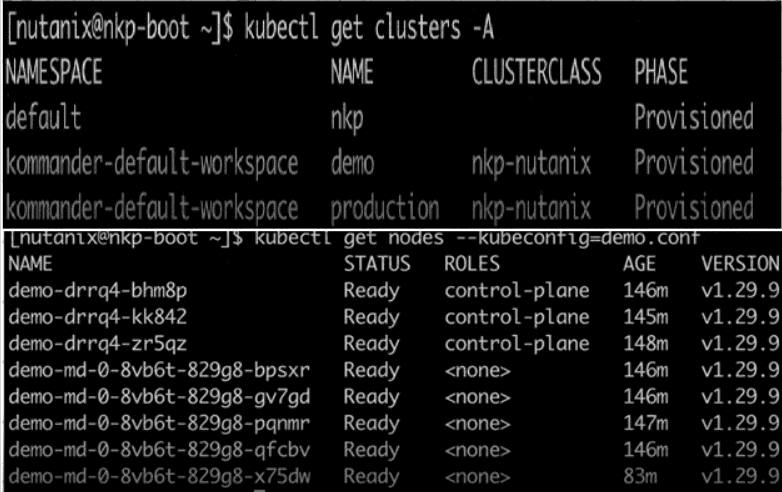A technology company has decided to migrate its infrastructure to NKP to improve the scalability and management of its applications. After a successful initial implementation, the operations team faces a new challenge of validating the HelmReleases to ensure that all applications are running correctly and avoid problems in production. Which command should the company execute to know the right status of their HelmReleases?
A Platform Engineer would like to deploy an NKP Platform Application to all the clusters within an NKP workspace from the command line. What is the command set to use, and what parameters must be specified with it?
A Cloud Engineer is deploying an NKP management cluster and plans to deploy multiple NKP workload clusters from it. The management cluster will be on Nutanix infrastructure, but the NKP workload clusters may be deployed in multiple provisioning environments, such as:
Nutanix
AWS
AzureWhen the engineer deploys an NKP workload cluster in AWS, which two default behaviors will be performed by NKP on this newly-deployed cluster? (Choose two.)
Refer to the exhibits.
A Cloud Administrator had provisioned a Kubernetes cluster named demo that is no longer actively being used. A Quick review from the Systems Engineer confirms that the following VMs are part of the demo Kubernetes cluster

How should the demo cluster be properly deleted?

A Platform Engineer is trying to create a new NKP cluster and is getting the error shown in the exhibit.
What is the most likely cause of this error?
When deploying NKP using the Nutanix provisioning method (CAPX), what are the supported OS platforms?
In an effort to control cloud cost consumption, auto-scale is configured to meet demands as needed.
What is the behavior for when nodes are scaled down?
A company is developing a new web application consisting of several microservices, including:
Authentication service
User management service
Payment processing service Each microservice is developed by different teams and requires an isolated environment for testing and development. To facilitate development and testing, the team decides to create a specific workspace in NKP. What should the team do to start this new creation?
A company recently deployed NKP. A Platform Engineer was asked to attach the existing Amazon EKS. A workspace and project were created accordingly, and resource requirements were met. What does the engineer need to do first to prepare the EKS clusters?
A developer asked a Platform Engineer to review a deployment in the cluster called iot-1 in the workspace iot-plant-3, but the engineer does not have the kubeconfig file. Which command is valid for generating the kubeconfig file to review the Kubernetes cluster?

